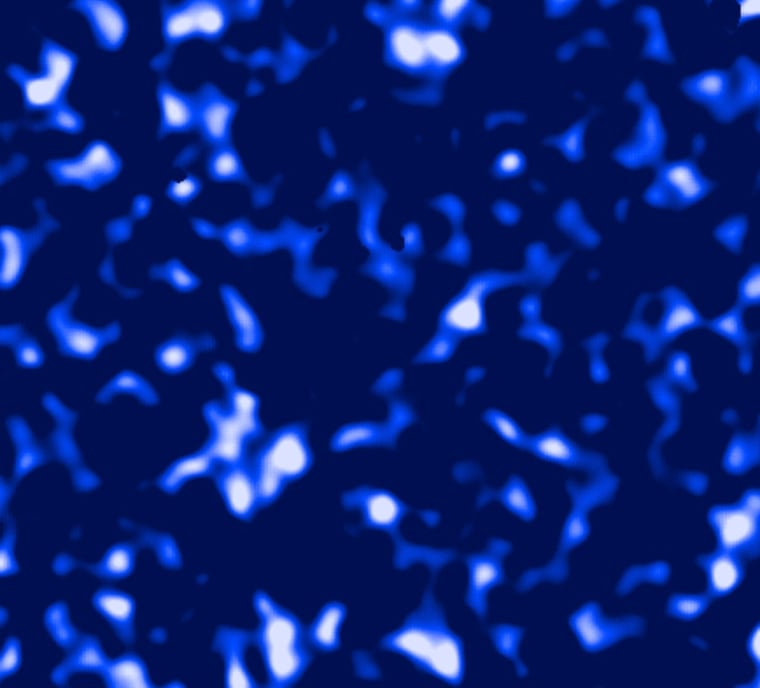Astronomers have created a vast cosmic map revealing an intricate web of dark matter and galaxies spanning a distance of 1 billion light-years.
This unprecedented task was achieved not by observing dark matter directly, but by observing its gravitational effects on ancient light traveling from galaxies that existed when the universe was half the age it is now.
Constructed by astronomers from the University of British Columbia and University of Edinburgh, this is the largest dark matter map ever built and took five years to complete.
The research was presented at the American Astronomical Society meeting in Austin, Texas, on Monday.
ANALYSIS: Mapping dark matter with a cosmic lens
Dark matter pervades the entire observable universe, accounting for 83 percent of the mass of the cosmos. But as it does not scatter or radiate light (or any kind of electromagnetic radiation for that matter), we cannot see it. Naturally, this poses an interesting problem for astronomers hoping to map the stuff.
However, astronomers can indirectly observe dark matter as its mass exerts a gravitational force on the space-time surrounding it. As light travels from distant galaxies, it will be bent around gravitational distortions in space-time — much like the paths of marbles rolling across a bent sheet of plastic — being caused by the dense regions of dark matter.
SCIENCE CHANNEL VIDEO: Dark energy
With this in mind, the international team of astronomers analyzed light from 10 million galaxies in four regions of the sky — all of which are about 6 billion light-years from Earth. As these galaxies are 6 billion light-years away, it took the light 6 billion years to travel that distance.
ANALYSIS: Dark matter mystery unraveled by dwarf galaxies?
Using a 340 Megapixel camera called "MegaCam" attached to the Canada-France-Hawaii Telescope (CFHT) in Hawaii, the ancient galactic light was analyzed to reveal the distorted paths each source traveled, thereby revealing the gravitational terrain surrounding clouds of dark matter.
"It is fascinating to be able to 'see' the dark matter using space-time distortion," said Ludovic Van Waerbeke of the University of British Columbia.
WATCH VIDEO: What about dark energy?
"It gives us privileged access to this mysterious mass in the universe which cannot be observed otherwise."
Catherine Heymans of the University of Edinburgh's School of Physics and Astronomy added: "By analyzing light from the distant universe, we can learn about what it has traveled through on its journey to reach us. We hope that by mapping more dark matter than has been studied before, we are a step closer to understanding this material and its relationship with the galaxies in our Universe."
Both Heymans and Van Waerbeke lead the Canada-France-Hawaii Telescope Lensing Survey (CFHTLenS) team.
ANALYSIS: How low can a dark matter halo go?
It is now hoped that other observatories — such as the Very Large Telescope's (VLT) Survey Telescope in Chile — will build on the CFHTLenS feat and create an even bigger dark matter map.
"Over the next three years we will image more than 10 times the area mapped by CFHTLenS, bringing us ever closer to our goal of understanding the mysterious dark side of the universe," said Koen Kuijken of Leiden University.
Understanding the nature of dark matter is critical to our knowledge of how the Universe evolved to form planets, stars and galaxies. Mapping this vast — yet invisible — cosmic web is a big step in that direction.
